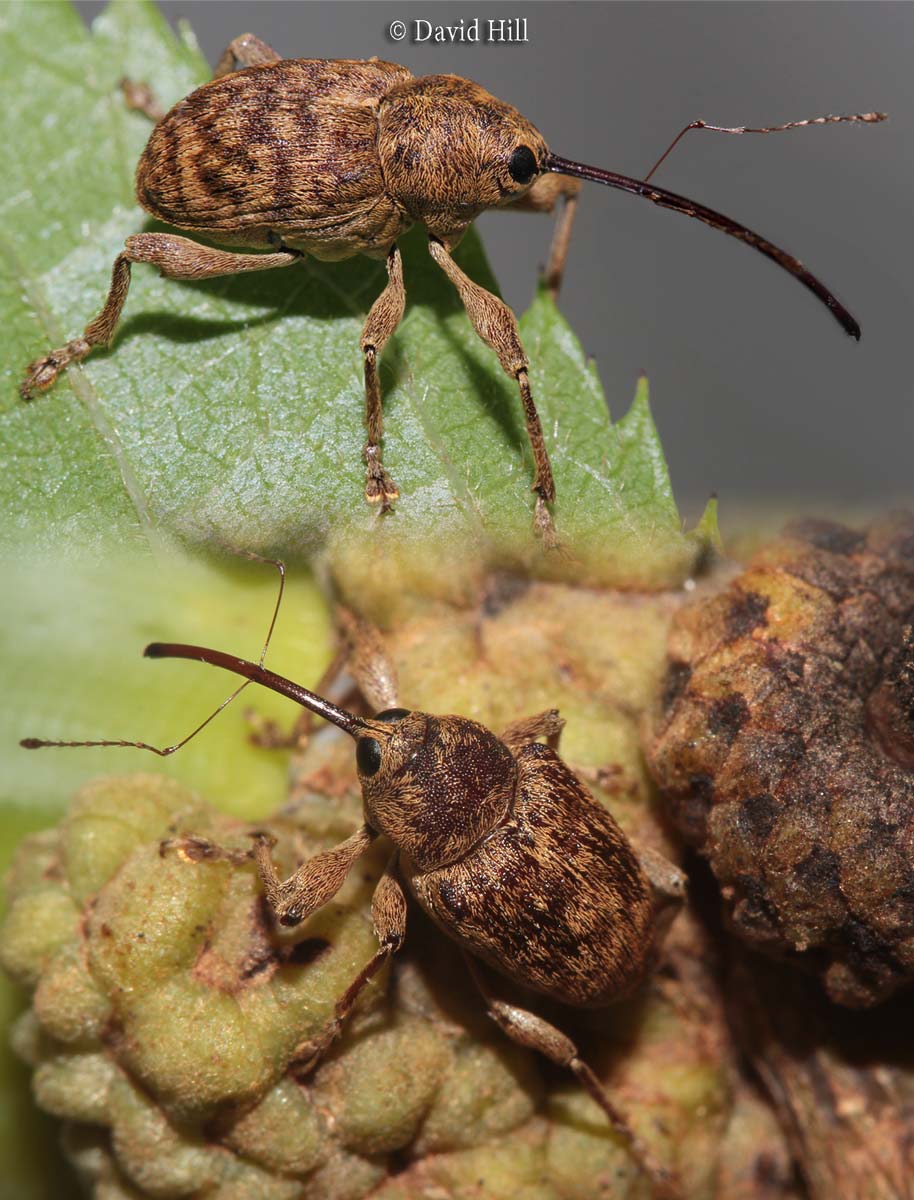
These beetles resemble other members of the weevil group in having a long, curved snout. The larvae are grayish white, legless grubs. Most curculio species, including the plum curculio (shown), pecan weevil, black walnut curculio, and rose curculio, attack a narrow range of hosts. The plum curculio, found east of the Rockies except along the Gulf Coast, is among the most difficult to control pests of apples and stone fruits. Crescent-shaped or mushroom-shaped scars on fruit are its calling card.
Target: Fruit and nut trees, roses.
Damage: Fruits and nuts are tunneled. Infested fruit ripens and drops prematurely; nuts wither and fall. Holes are drilled in rose blossoms.
Life cycle: Adult beetles overwinter in debris, then feed on spring growth before laying eggs on developing fruits, nuts, or flower buds-into which the larvae tunnel to feed. After feeding, larvae burrow into the ground to pupate. There are one or two generations a year.
Notes: Adults play dead when disturbed, so you can shake them out of plants onto a cloth and dispose of them.



